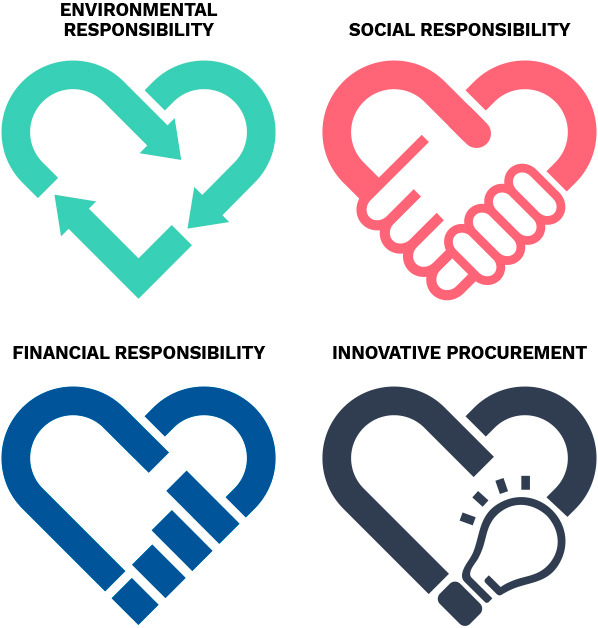Responsibility analysis expands perspectives
For more than ten years, we have been working on environmental matters. An ecolabel has been available for joint procurement that meets the environmental requirements since 2009. In late 2019, we introduced a broader responsibility analysis that covers the three components of responsibility: environmental, financial and social. This is an important milestone for us in increasing the effectiveness of procurement.
The responsibility analysis covers all elements of environmental, social and financial responsibility in detail. The tool reminds the party arranging the tendering of many factors that should be considered and requirements which can be included in the invitation to tender documents as mandatory requirements, contract award criteria or contractual terms, for example.
Towards the goal
Identifying the harmful impact of a product or service and coming up with a positive goal are important in environmental matters. Furthermore, the party arranging the tendering must come up with initiatives to mitigate the harmful impact and facilitate development towards a positive goal. To fill out the form, you must familiarise yourself with the subject matter and determine what is essential. The matter must also be revisited during the agreement period to consider, using suitable indicators, whether the desired effect was achieved.
The social responsibility component is also heavily present in our new responsibility analysis. A couple of years ago, we completed a collaboration project with Finnwatch to consider risks related to social responsibility in ICT procurement chains. Inspired by the project, we decided to include a broad range of social responsibility tools in our toolbox. The code of conduct for contractual suppliers, which was originally prepared for ICT procurement, is currently part of the agreement in any procurement project where high social responsibility risks have been identified. Oversight during the agreement period is also important, albeit challenging.
Furthermore, we have more actively considered employment through public procurement. This is a new aspect for us. We want to learn more about it, and we are therefore eager to hear more about the experiences of our regional authority customers who have already realised such projects. Accessibility and availability are also considered in any procurement projects to which they apply. The same applies to the principles of fair trade.
Four responsibility labels
We are highly experienced in the field of financial responsibility. We have carefully built our functional processes over the course of several years. We have automated the oversight of our suppliers during the agreement period in the case of some of the indicators. Furthermore, we perform oversight required by the Act on the Contractor’s Obligations and Liability when Work is Contracted Out in the case of some of the joint procurement agreements.
We have also included the innovation aspect in the responsibility analysis, because in many public procurement projects, promoting innovation is one of the goals. According to the Government Programme, 10% of public procurement should be innovative. If a procurement process increases the profitability, quality, sustainability or effectiveness of public services, it can be innovative in nature. We also want to promote and monitor this aspect, and our procurement projects can be labelled innovative.
The previous Hansel’s ecolabel has thus been expanded to four labels, which can be awarded to our joint procurement projects:
- Ecolabel
- Social responsibility label
- Financial responsibility label
- Innovative procurement label

Read next: Procurement matters

